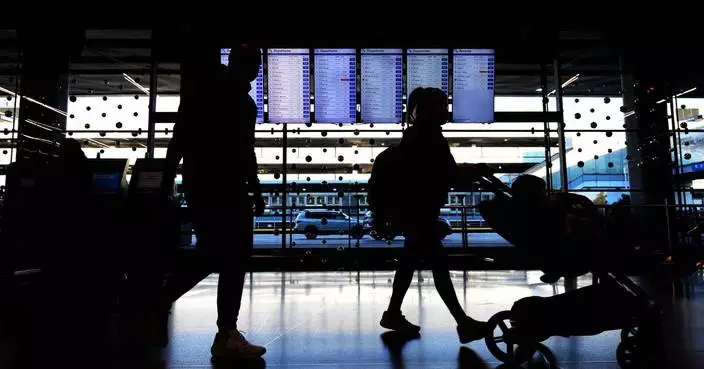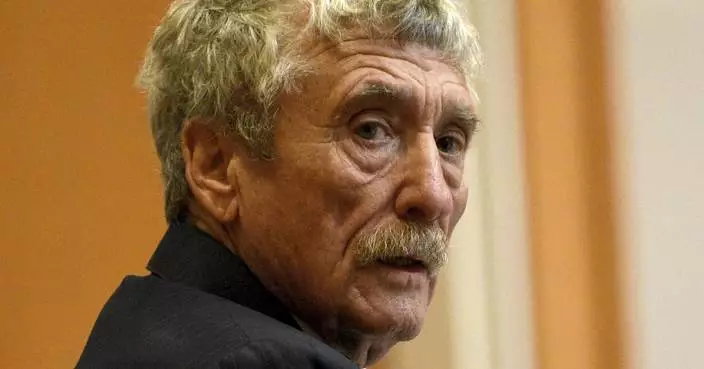The Associated Press has found that a Pentagon-funded study that looked into extremism in the military relied on old data, included misleading analyses and ignored evidence that could have led to a different conclusion.
Here are takeaways from the AP’s reporting.
After the Jan. 6 insurrection, when military leadership reacted with alarm when people in tactical gear stormed up the U.S. Capitol steps in military-style stack formation, Defense Secretary Lloyd Austin outlined a variety of steps. Those included a request for a study by the Institute for Defense Analyses. The IDA, which a spokesman said was paid $900,000 for the study, is a longtime partner to the Pentagon that has received more than a billion dollars in contracts over the past decade to provide research and strategic consulting to the nation’s military.
The IDA’s study, entitled “Prohibited Extremist Activities in the U.S. Department of Defense,” was published quietly just before Christmas 2023 — nearly 18 months late and with no announcement. Its key recommendation: the DOD should “not overreact and draw too large of a target” in its anti-extremism efforts, despite Austin’s promise to attack the problem head-on in the wake of Jan. 6.
The AP found that the IDA report’s authors did not use newer data that was offered to it, and instead based one of its foundational conclusions on Jan. 6 arrest figures that were more than two years out of date by the time of the report’s public release.
As a result, the report grossly undercounted the number of military and veterans arrested for the Jan. 6 attack and provided a misleading picture of the severity of the growing problem, the AP has found.
The IDA based its conclusion on arrests made as of Jan. 1, 2022, the year immediately following the attack. As of that date, 82 of the 704 people arrested had military backgrounds, or 11.6% of the total arrests, IDA reported.
But in the months and years that followed, the number of arrestees with a military background nearly tripled.
IDA’s report states that its research was conducted from June 2021 through June 2022. By June 2022, the number of active or former military arrested had grown by nearly 50%, according to the same dataset IDA cited from the Program on Extremism at George Washington University. When IDA’s report was published a year and a half later, in December 2023, 209 people with military backgrounds who attended the insurrection had been arrested, or 15.2%of all arrests.
That has since grown to 18%, according to data collected by the National Consortium for the Study of Terrorism and Responses to Terrorism, or START, at the University of Maryland. It represents a significant statistical increase, and rises above the general population estimates IDA cited among its reasoning for recommending the Pentagon not overreact. START’s research was also funded by DOD and other federal agencies.
The number of service members and veterans who radicalize make up a tiny fraction of a percentage point of the millions and millions who have honorably served their country. Yet their impact can be large.
As the AP reported in an investigation published last month, more than 480 people with a military background were accused of ideologically driven extremist crimes from 2017 through 2023, including the more than 230 arrested in connection with the Jan. 6 insurrection, according to data collected and analyzed by START. Though those numbers reflect a small fraction of those who have served in the military — and Austin, the current defense secretary, has said that extremism is not widespread in the U.S. military — AP’s investigation found that plots involving people with military backgrounds were more likely to involve mass casualties.
The IDA’s 199-page report conceded that there was “some indication” that the radicalization numbers in the veterans community could be “slightly higher and may be growing” but said its review found “no evidence” that was the case among active duty troops.
In fact, data show that since 2017 both service members and veterans are radicalizing at a faster rate than people without military training. Less than 1% of the adult population is currently serving in the U.S. military, but active duty military members make up a disproportionate 3.2% of the extremist cases START researchers found between 2017 and 2022.
IDA’s researchers were offered START’s data, according to Michael Jensen, START’s lead researcher. IDA’s report even called it “perhaps the best effort to date” in collecting data on extremists in the military. But IDA never followed up to get it, Jensen said.
“We showed them data from over 30 years when they visited with us, so they knew the data were out there to look at a longer timespan,” Jensen said. “We offered it, and offered to help in any other way we could, but we never heard from them again after our one and only meeting.”
An IDA spokesman defended the report, saying it remains confident that its findings were “solidly based on the best data available at the time the work was conducted.” The AP reached out by email and LinkedIn messages to several people listed as authors of the report. None provided comment. A Defense official said the department “is committed to maintaining high standards for its data collection and transparency” and referred specific questions on the methodology and analysis of the report to IDA.
Hegseth and Trump’s transition team did not respond to emails seeking comment.
In January of this year, Pete Hegseth, Donald Trump's pick to be defense secretary, told a Fox News audience the study proved that the number of military service members and veterans involved in the Jan. 6 insurrection did not indicate a wider problem in the armed forces.
“They knew this was a sham,” Hegseth said, referring to Austin and other military leaders. “Then they do the study, which confirms what we all know.”
Hegseth, who was working for Fox News at the time and had no involvement in the report, wasn’t alone. The Wall Street Journal’s opinion page highlighted the same report as evidence that extremists in military communities were “phantoms” created by a “false media narrative.” The X account for Republicans on the House Armed Services Committee posted that the study showed the focus on extremism in the military was a “witch hunt.”
—-
Aaron Kessler contributed reporting from Washington, D.C.
—-
Contact AP’s global investigative team at Investigative@ap.org

FILE - In this Wednesday, Jan. 6, 2021 file photo, supporters of President Donald Trump gather outside the U.S. Capitol in Washington. (AP Photo/Shafkat Anowar, File)
JERUSALEM (AP) — Prime Minister Benjamin Netanyahu’s security Cabinet has approved a ceasefire deal with Hezbollah, clearing the way for the truce to take effect.
Netanyahu’s office said the plan was approved by a 10-1 margin. The late-night vote came shortly before President Joe Biden was expected to announced details of the deal in Washington.
Earlier, Netanyahu defended the ceasefire, saying Israel has inflicted heavy damage on Hezbollah and could now focus its efforts on Hamas militants in Gaza and his top security concern, Iran. Netanyahu vowed to strike Hezbollah hard if it violates the expected deal.
THIS IS A BREAKING NEWS UPDATE. AP’s earlier story follows below.
JERUSALEM (AP) — Israeli Prime Minister Benjamin Netanyahu on Tuesday recommended his Cabinet approve a United States-brokered ceasefire agreement with Lebanon's Hezbollah, setting the stage for an end to nearly 14 months of fighting linked to the ongoing war in the Gaza Strip.
In the hours leading up to the Cabinet meeting, Israel carried out its most intense wave of strikes in Beirut and its southern suburbs and issued a record number of evacuation warnings. At least 24 people were killed in strikes across the country, according to local authorities, as Israel signaled it aims to keep pummeling Hezbollah in the final hours before any ceasefire takes hold.
A ceasefire would mark the first major step toward ending the regionwide unrest triggered by Hamas’ attack on Israel on Oct. 7, 2023. But it does not address the devastating war in Gaza.
U.S. President-elect Donald Trump has vowed to bring peace to the Middle East, but neither he nor Netanyahu have proposed a postwar solution for the Palestinian territory, where Hamas is still holding dozens of hostages and the conflict is more intractable.
Still, any halt to the fighting in Lebanon is expected to reduce the likelihood of war between Israel and Iran, which backs both Hezbollah and Hamas and exchanged direct fire with Israel on two occasions earlier this year.
In a televised statement, Netanyahu said he would present the ceasefire proposal to Cabinet ministers later Tuesday, when they are expected to vote on it. He listed a series of accomplishments against Israel’s enemies across the region and said a ceasefire with Hezbollah would further isolate Hamas in Gaza and allow Israel to focus on its main enemy, Iran, which backs both groups.
“If Hezbollah breaks the agreement and tries to rearm, we will attack,” he said. “For every violation, we will attack with might.”
It was not immediately clear when the ceasefire would go into effect, and the exact terms of the deal were not released.
The deal calls for a two-month initial halt in fighting and would require Hezbollah to end its armed presence in a broad swath of southern Lebanon, while Israeli troops would return to their side of the border. Thousands of additional Lebanese troopsand U.N. peacekeepers would deploy in the south, and an international panel headed by the United States would monitor all sides’ compliance.
But implementation remains a major question mark. Israel has demanded the right to act should Hezbollah violate its obligations. Lebanese officials have rejected writing that into the proposal.
Hezbollah has said it accepts the proposal, but a senior official with the group said Tuesday that it had not seen the agreement in its final form.
“After reviewing the agreement signed by the enemy government, we will see if there is a match between what we stated and what was agreed upon by the Lebanese officials,” Mahmoud Qamati, deputy chair of Hezbollah’s political council, told the Al Jazeera news network.
“We want an end to the aggression, of course, but not at the expense of the sovereignty of the state.” of Lebanon, he said. “Any violation of sovereignty is refused.”
Even as Israeli, U.S, Lebanese and international officials have expressed growing optimism over a ceasefire, Israel has continued its campaign in Lebanon, which it says aims to cripple Hezbollah’s military capabilities.
An Israeli strike on Tuesday leveled a residential building in the central Beirut district of Basta — the second time in recent days warplanes have hit the crowded area near the city’s downtown. At least seven people were killed and 37 wounded, according to Lebanon's Health Ministry. Strikes on Beirut's southern suburbs killed at least one person and wounded 13, it said.
Three people were killed in a separate strike in Beirut and three in a strike on a Palestinian refugee camp in southern Lebanon. Lebanese state media said another 10 people were killed in the eastern Baalbek province. Israel says it targets Hezbollah fighters and their infrastructure.
Israel also struck a building in Beirut's bustling commercial district of Hamra for the first time, hitting a site that is around 400 meters (yards) from Lebanon’s Central Bank. There were no reports of casualties.
The Israeli military said it struck targets in Beirut and other areas linked to Hezbollah's financial arm.
The evacuation warnings covered many areas, including parts of Beirut that previously have not been targeted. The warnings, coupled with fear that Israel was ratcheting up attacks before a ceasefire, sent residents fleeing. Traffic was gridlocked, and some cars had mattresses tied to them. Dozens of people, some wearing their pajamas, gathered in a central square, huddling under blankets or standing around fires as Israeli drones buzzed loudly overhead.
Hezbollah, meanwhile, kept up its rocket fire, triggering air raid sirens across northern Israel.
Israeli military spokesman Avichay Adraee issued evacuation warnings for 20 buildings in Beirut's southern suburbs, where Hezbollah has a major presence, as well as a warning for the southern town of Naqoura where the U.N. peacekeeping mission, UNIFIL, is headquartered.
UNIFIL spokesperson Andrea Tenenti told The Associated Press that peacekeepers will not evacuate.
The Israeli military also said its ground troops clashed with Hezbollah forces and destroyed rocket launchers in the Slouqi area on the eastern end of the Litani River, a few kilometers (miles) from the Israeli border.
Under the ceasefire deal, Hezbollah would be required to move its forces north of the Litani, which in some places is about 30 kilometers (20 miles) north of the border.
Hezbollah began firing into northern Israel, saying it was showing support for the Palestinians, a day after Hamas carried out its Oct. 7, 2023, attack on southern Israel, triggering the Gaza war. Israel returned fire on Hezbollah, and the two sides have been exchanging barrages ever since.
Israel escalated its campaign of bombardment in mid-September and later sent troops into Lebanon, vowing to put an end to Hezbollah fire so tens of thousands of evacuated Israelis could return to their homes.
More than 3,760 people have been killed by Israeli fire in Lebanon the past 13 months, many of them civilians, according to Lebanese health officials. The bombardment has driven 1.2 million people from their homes. Israel says it has killed more than 2,000 Hezbollah members.
Hezbollah fire has forced some 50,000 Israelis to evacuate in the country’s north, and its rockets have reached as far south in Israel as Tel Aviv. At least 75 people have been killed, more than half of them civilians. More than 50 Israeli soldiers have died in the ground offensive in Lebanon.
Chehayeb and Mroue reported from Beirut. Associated Press reporters Lujain Jo and Sally Abou AlJoud in Beirut contributed.
Find more of AP’s war coverage at https://apnews.com/hub/israel-hamas-war

In this screen grab image from video provide by the Israeli Government Press Office, Israeli Prime Minister Benjamin Netanyahu makes a televised statement Tuesday, Nov. 26, 2024, in Jerusalem, Israel. (Israeli Government Press Office via AP)
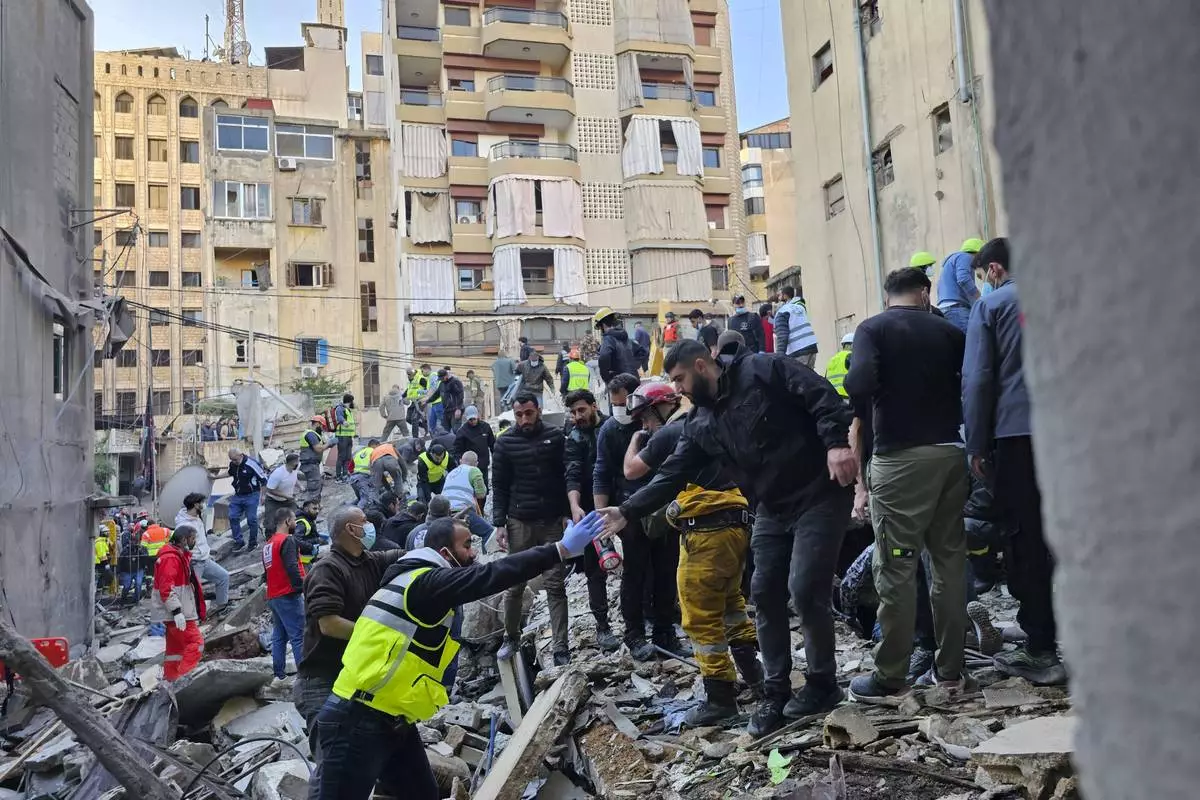
Rescuers search for victims at the site of an Israeli airstrike that targeted a building in Beirut, Lebanon, Tuesday, Nov. 26, 2024. (AP Photo/Hassan Ammar)
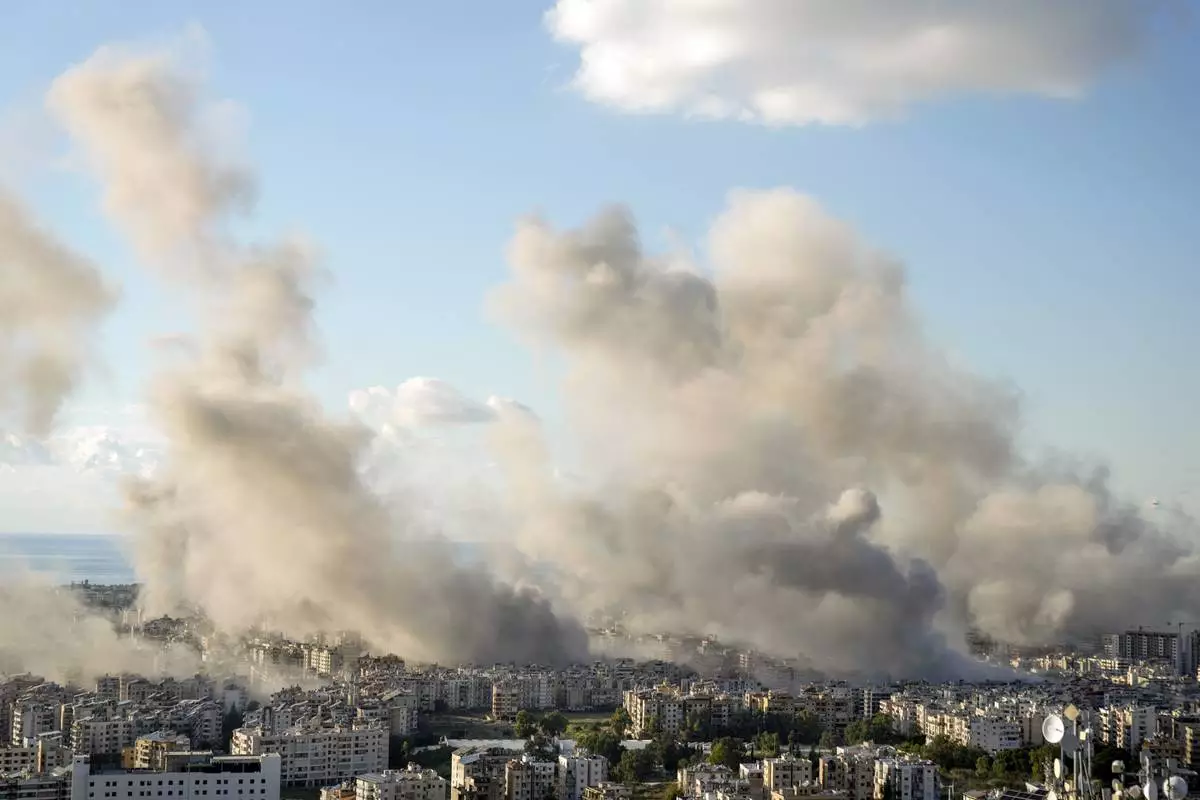
Smoke rises following an Israeli airstrike on Dahiyeh, in Beirut, Lebanon, Tuesday, Nov. 26, 2024. (AP Photo/Bilal Hussein)

Rescuers search for victims at the site of an Israeli airstrike that targeted a building in Beirut, Lebanon, Tuesday, Nov. 26, 2024. (AP Photo/Hassan Ammar)

Journalists watch the smoke rising between buildings hit in Israeli airstrikes near the Palestinian refugee camp of Rashidiyeh, as it seen from Tyre city, south Lebanon, Tuesday, Nov. 26, 2024. (AP Photo/Hussein Malla)
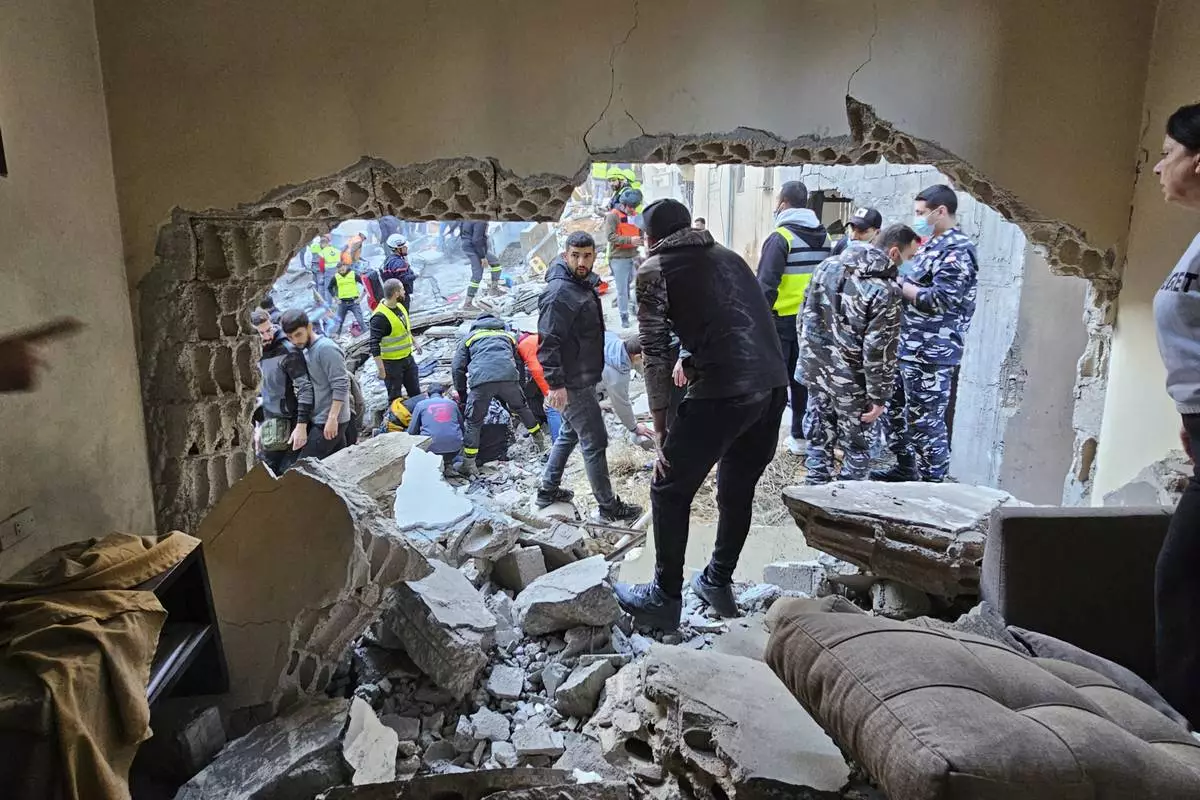
Rescuers and residents search for victims at the site of an Israeli airstrike that targeted a building in Beirut, Lebanon, Tuesday, Nov. 26, 2024. (AP Photo/Hassan Ammar)
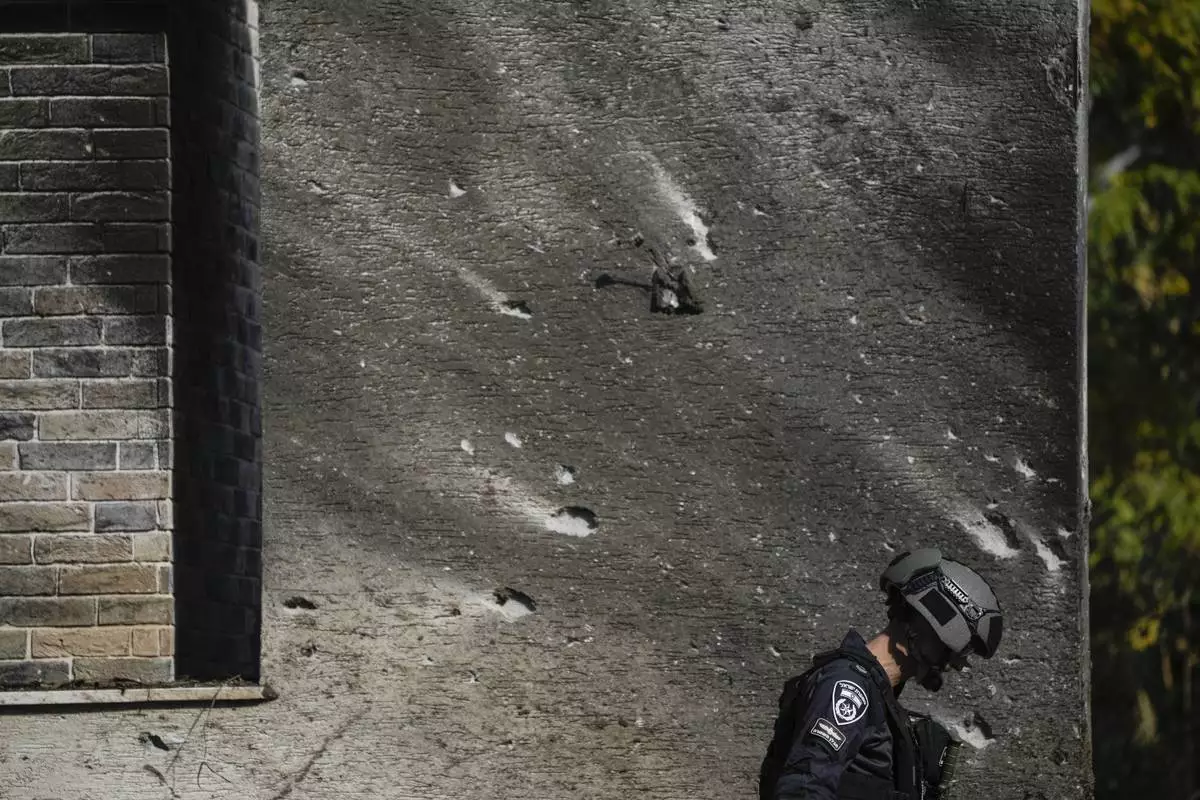
A police bomb squad officer inspects the site where a rocket fired from Lebanon landed in a backyard in Kiryat Shmona, northern Israel, Tuesday Nov. 26, 2024. (AP Photo/Leo Correa)
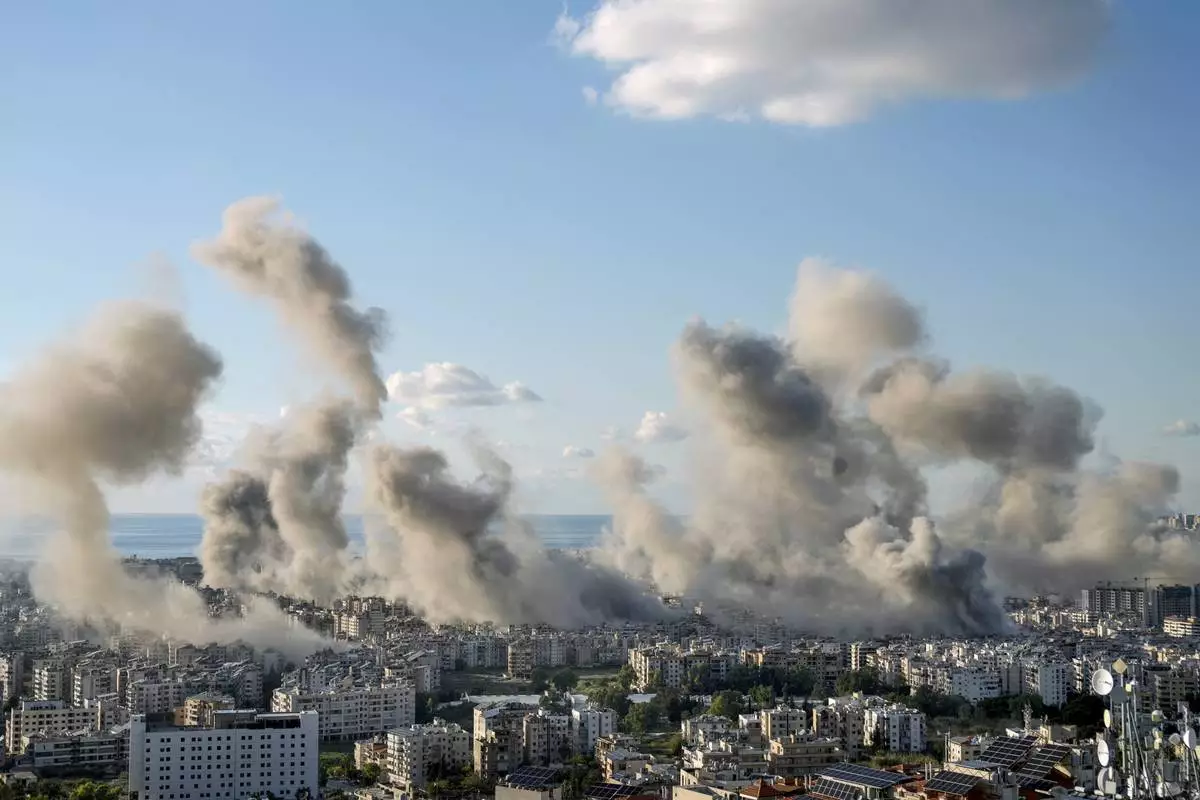
Smoke rises following an Israeli airstrike on Dahiyeh, in Beirut, Lebanon, Tuesday, Nov. 26, 2024. (AP Photo/Bilal Hussein)
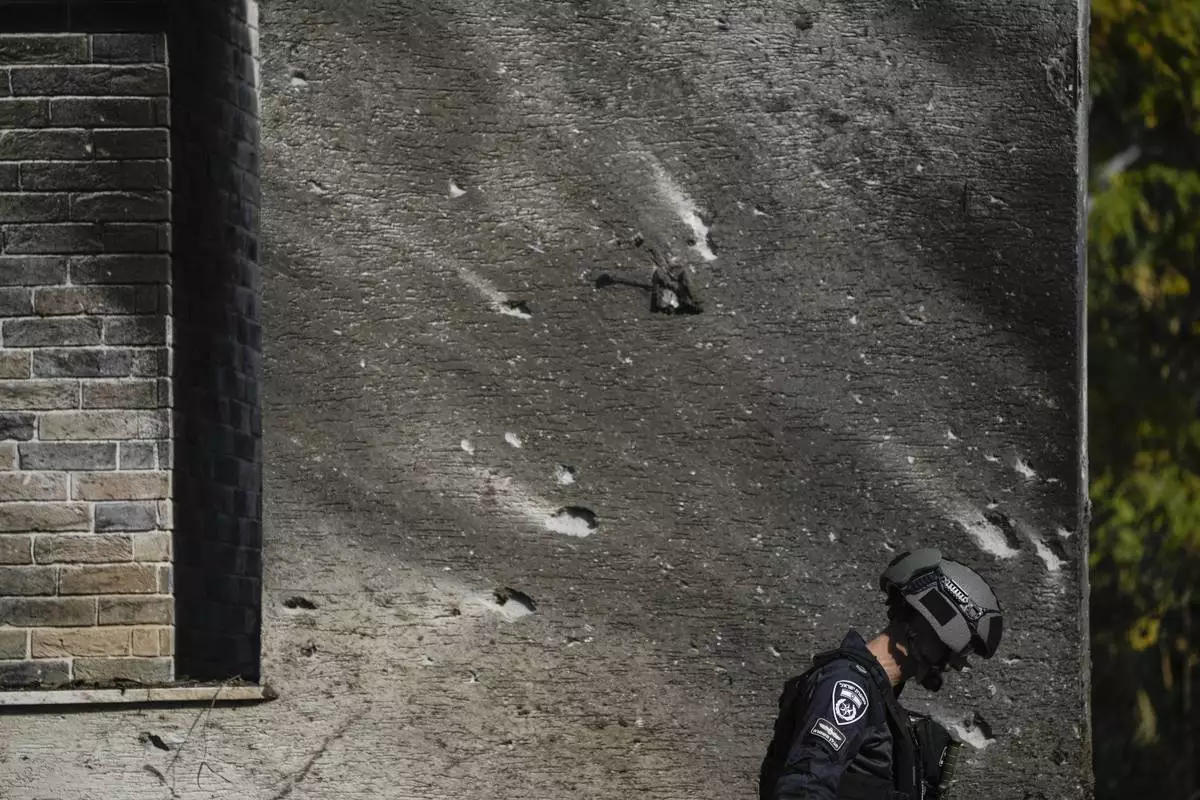
A police bomb squad officer inspects the site where a rocket fired from Lebanon landed in a backyard in Kiryat Shmona, northern Israel, Tuesday Nov. 26, 2024. (AP Photo/Leo Correa)
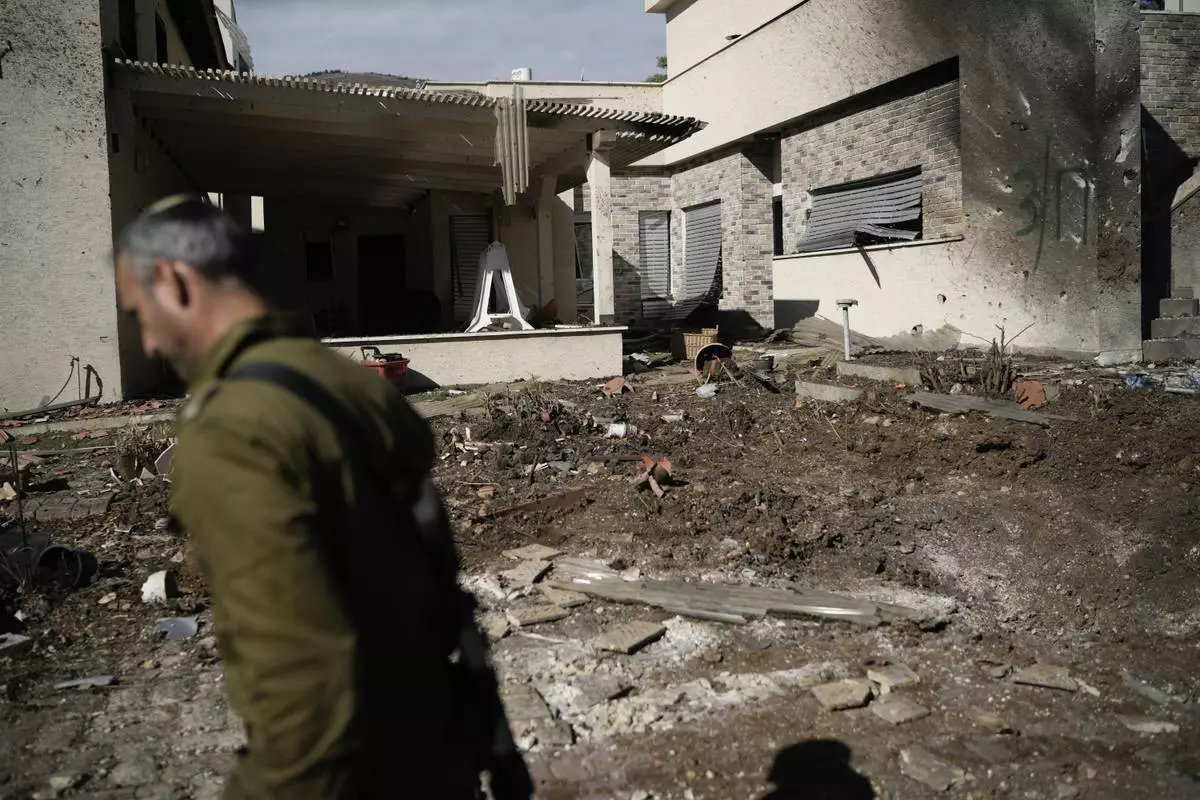
An Israeli soldier inspects the site where a rocket fired from Lebanon landed in a backyard in Kiryat Shmona, northern Israel, Tuesday Nov. 26, 2024. (AP Photo/Leo Correa)
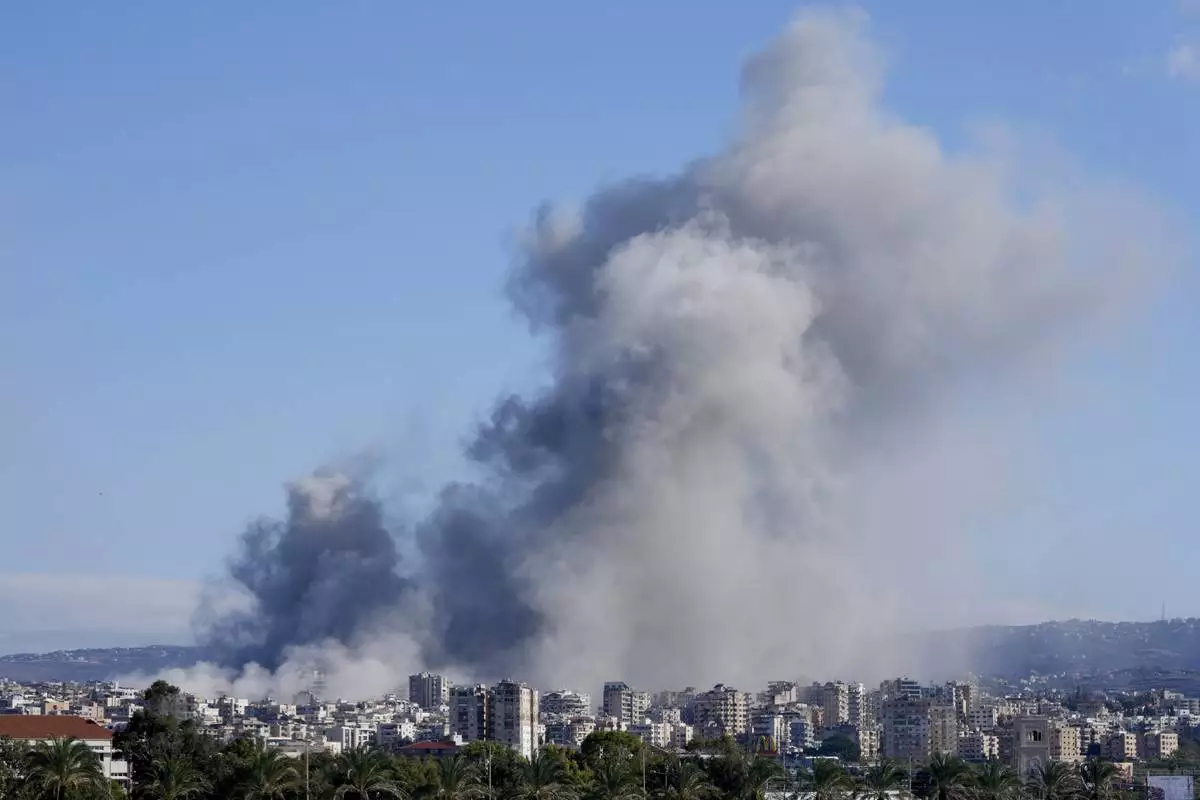
Smoke rises between buildings hit in Israeli airstrikes in Hosh neighbourhood, in Tyre, south Lebanon, Tuesday, Nov. 26, 2024. (AP Photo/Hussein Malla)
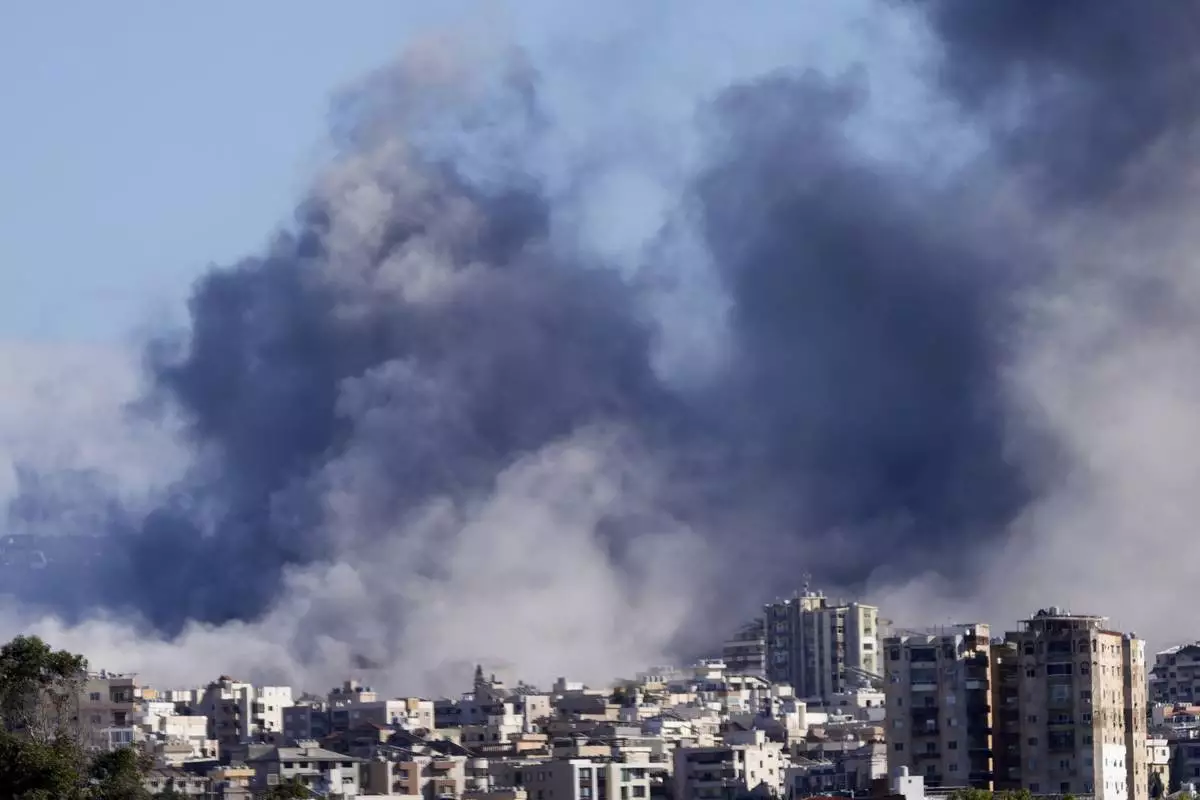
Smoke rises between buildings hit in Israeli airstrikes in Hosh neighbourhood, in Tyre, south Lebanon, Tuesday, Nov. 26, 2024. (AP Photo/Hussein Malla)

Police bomb squad officers collect the pieces of a rocket fired from Lebanon that landed in a backyard in Kiryat Shmona, northern Israel, Tuesday Nov. 26, 2024. (AP Photo/Leo Correa)
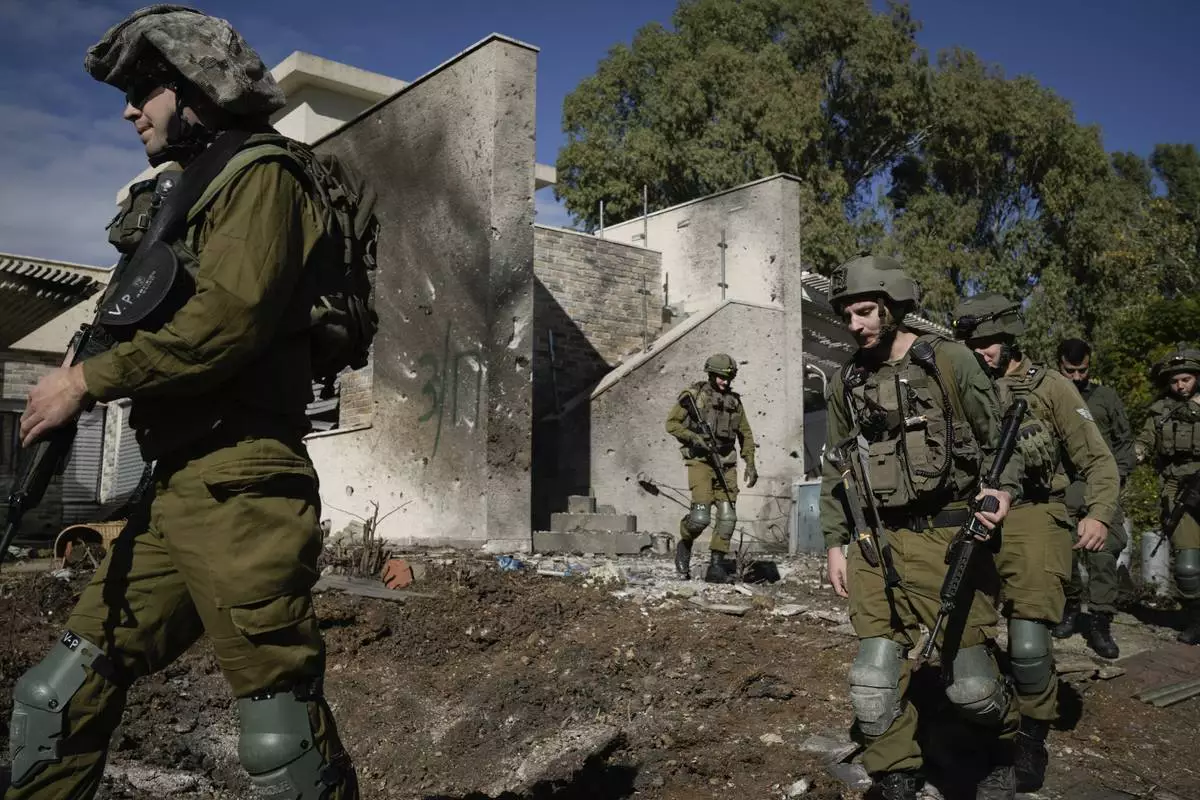
Israeli soldiers inspect the site where a rocket fired from Lebanon landed in a backyard in Kiryat Shmona, northern Israel, Tuesday Nov. 26, 2024. (AP Photo/Leo Correa)
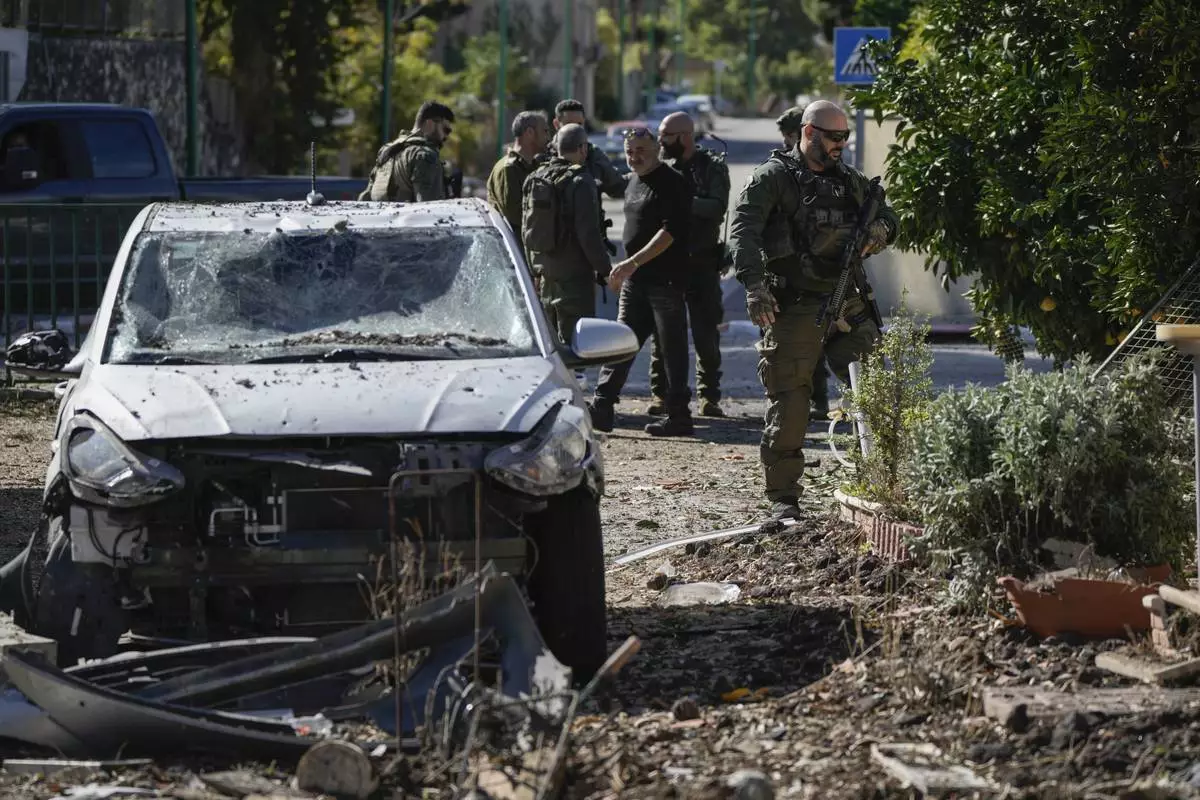
Israeli security officers and army soldiers inspect the site where a rocket fired from Lebanon landed in a backyard in Kiryat Shmona, northern Israel, Tuesday Nov. 26, 2024. (AP Photo/Leo Correa)























